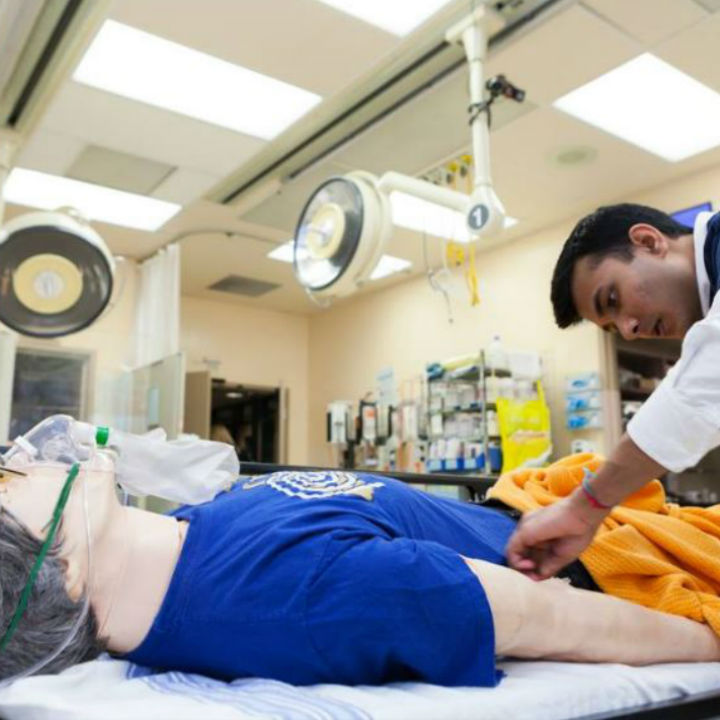Dr. Petrosoniak’s primary academic focus is the application of in situ simulation (simulation within the workplace) in trauma and emergency medicine. His work is applied across 3 domains:
1. Patient safety and latent safety threat (LSTs) detection: What does this involve? Dr. Petrosoniak works to improve patient safety using in situ simulation by testing and evaluating existing systems and processes. Think of this like a car manufacturer crash testing a car. Analogously, using in situ simulation, systems and processes are “crash tested” to detect problems and trial solutions. Dr. Petrosoniak was the primary investigator for the TRUST study (Trauma Resuscitation Using in situ Simulation Team Training) which applied a human factors approach to LST identification using in situ simulation. This study utilized a novel method, framework analysis, to categorize and prioritize LSTs.
2. Team-based education and skills training: Dr. Petrosoniak applies team-based training principles within the actual workplace for high performance teams. Additionally, Dr. Petrosoniak uses in situ simulation as a needs assessment to inform future curricula since observing a team function within their actual place of work can quickly identify strengths and weaknesses helpful for curriculum design. Finally, in situ simulation represents an excellent opportunity to train and evaluate performance for rare but life-saving procedures.
3. Design and testing of new clinical infrastructure: The application of simulation (including in situ simulation) in the design and testing of new clinical spaces prior to beginning patient care is novel. Dr. Petrosoniak applies multi-modal, simulation-based methods within a design thinking (link to Wikipedia design thinking page)-informed framework in the design of new clinical infrastructure (e.g. St. Michael’s emergency department, trauma bay and ICU).
Petrosoniak A, Brydges R, Nemoy L, Campbell D.
Adv Simul (Lond). 2018 Jun 14;3:8.
Petrosoniak A, Almeida R, Pozzobon L, Hicks C, Fan M, White K, McGowan M, Trbovich P
BMJ Simulation. 2018. Mar.
Petrosoniak A, Ryzynski A, Lebovic G, Woolfrey K
Simul Healthc. 2017 Apr;12(2):76-82.
Petrosoniak A, Auerbach M, Wong AH, Hicks CM
Emerg Med Australas. 2017 Feb;29(1):83-88.
Fan M, Petrosoniak A, Pinkney S, Hicks C, White K, Almeida AP, Campbell D, McGowan M, Gray A, Trbovich P.
BMJ Open. 2016 Nov 7;6(11):e013683.

By James Wysotski
Toronto, August 10, 2016